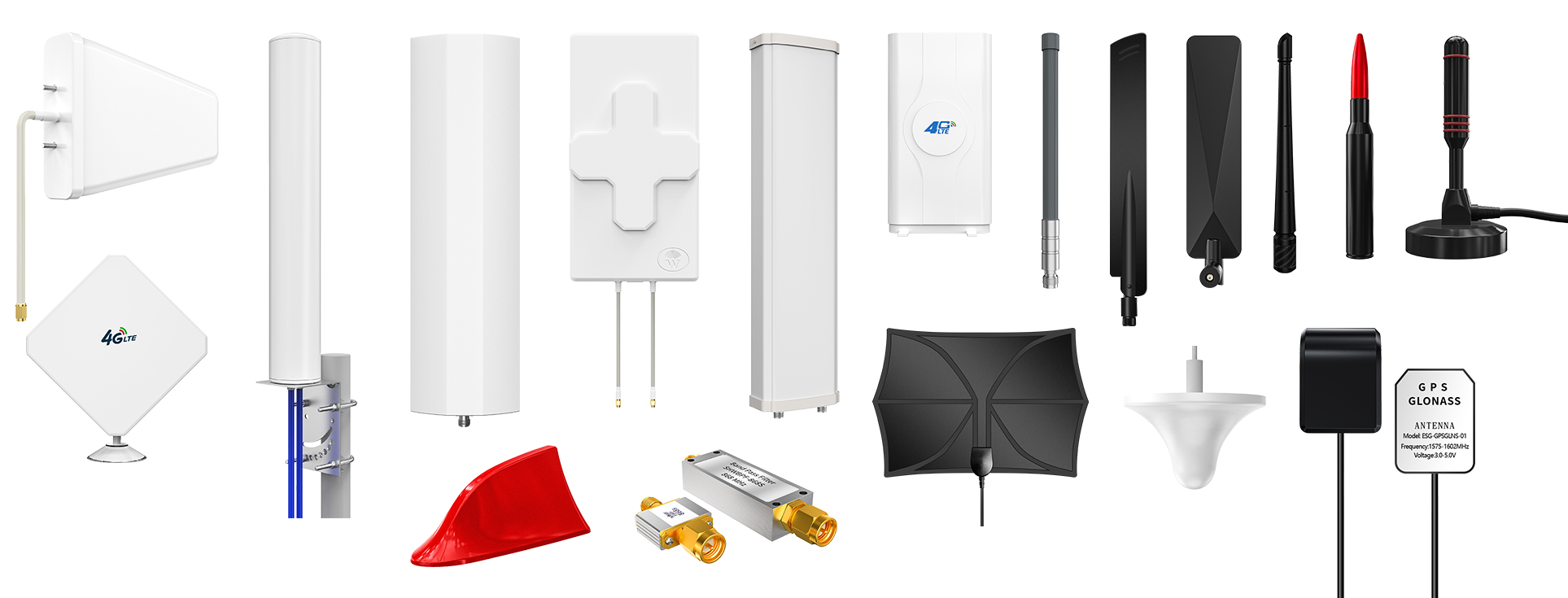
Privacy statement: Your privacy is very important to Us. Our company promises not to disclose your personal information to any external company with out your explicit permission.
5G will fundamentally change the way enterprises, industries and society operate. Take the automobile industry as an example, the reduced delay provided by 5G can make cars smarter; For smart grid, greater coverage depth will enable more sensors to spread in hard-to-reach places. For the industrial Internet, faster connection speed will make the factory smarter, more efficient and safer.
Each of these use cases uniquely benefits from 5G. However, although the Internet of Things is diverse, every product shares one component: antenna. Moreover, more and more people. When you embark on the process of antenna selection, where do you look and what should you consider to maximize performance?

Now, some antennas are only the size of fingertips, which can be neatly placed in the corner of the circuit board and have excellent performance. With the 5G Base Station Grid Antenna, the status quo is about to be broken. The specification of the fifth generation wireless technology is forcing antenna manufacturers to reconsider their chip designs and speed up innovative projects of antenna production.
millimetre wave
The wavelength of 5G Base station antenna frequency can be 100 times the size of today's 4G and Wi-Fi networks. For compatibility, the antenna needs to adapt to support these frequencies, which can reach 300 GHz. Simply put, these antennas need more materials to send and receive as efficiently as these frequencies.
Multi-input multi-output
To benefit from any significant increase in data throughput, devices need to make use of MIMO. Using 5G multiple input antennas and multiple output antennas, the equipment expands the volume of antenna hardware to achieve faster throughput.
As a mainstream technology, MIMO design brings more complexity to the project. They have a great influence on the design of equipment and the antennas that make up them. On the one hand, antennas need to be larger, so does the circuit board space they need.
In order to perform well, the antenna needs to be at least a quarter of the operating wavelength. The chip uses the ground plane (usually PCB) to form a part of the antenna. This means that not only the components are larger, but also the ground plane space needs to be large.
And efficiency and performance
Although the new antenna design is innovative, they still have to abide by the laws of physics. With the complex 3D structure and ground plane, the antenna chip has been reduced. The 5G equipment operating in frequency band 71 needs a huge ground plane length of 121mm to operate normally. As 5G uses longer wavelength, the amount of ground plane space is also increasing.
Easy integration
Facing the challenges and complexity brought by 5G design, finding and integrating antennas is a crucial step in the design cycle.
Each antenna is different in its optimal position, required ground plane length, preferred direction and application. Each of these considerations is particularly important, because mobile operators will evaluate the equipment with the same rigor as their evaluation of less complex traditional cellular technologies.
When the equipment is particularly small, it is helpful to first consider the antenna, its location and requirements. Given the compactness of IoT devices, it can prevent many common problems that may lead to project delays.
Finding a suitable antenna can significantly simplify this process. This may mean that you can choose the antenna suitable for your design, and then optimize it for its operating environment.
For off-the-shelf solutions, they can save designers time and money, while ensuring a strong performance level. With the emergence of more customized solutions, the advanced RF expertise required to design and integrate these solutions is prohibitive.
Guangtong 5G Antenna Solution
The complexity and performance requirements of 5G make embedded chip solutions an easy choice for designers. They are not only easier to integrate, but also have a significant impact when trying to authenticate devices for network operators.
And the wide-pass antenna solution provides a high level of performance in the most compact form. All our embedded antennas are provided in tape form to reduce the cost of the manufacturing process-helping you save time and money.

Guangtong 5G external antenna BGS-910 provides wide coverage of frequency band 698-960/1400-6000/1575.42 MHz, and its size is 140mm (length) *80mm (width) *22mm (height). The antenna supports gains of < 3.5/ <2.5/ <1.5 VSWR (voltage standing wave ratio) and -1.5-2.0/-0.3-3.9/3.0 dBi, and is equipped with SMA connector for easy installation. BGS-910A can match all communication modules of Guanghetong, increase signal strength, realize ubiquitous wireless coverage, and help customers build a complete wireless communication solution of Internet of Things. Guangtong also provides customized value-added services, including antenna evaluation, design support, manufacturing, EMC testing and certification assistance to meet different application requirements.


Privacy statement: Your privacy is very important to Us. Our company promises not to disclose your personal information to any external company with out your explicit permission.

Fill in more information so that we can get in touch with you faster
Privacy statement: Your privacy is very important to Us. Our company promises not to disclose your personal information to any external company with out your explicit permission.